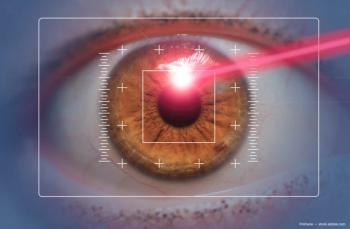
Techniques, tips for successful glaucoma tube shunt surgery
Some finesse may go a long way for physicians to ensure best possible result for patients
Glaucoma surgeons describe strategies they find helpful for optimizing outcomes with glaucoma tube shunt surgery.
Reviewed by Jonathan Eisengart, MD, and Steven J. Gedde, MD
Glaucoma tube shunt surgery may seem somewhat mundane, but a certain amount of finesse can help surgeons ease difficult situations and achieve the best long-term outcomes for patients.
Optimizing exposure
Dr. Eisengart, clinical assistant professor of ophthalmology,
Noting that the typical corneal traction suture may not allow adequate leverage for rotating the globe to achieve the exposure needed for proper tube placement in the inferonasal or superonasal quadrants, Dr. Eisengart suggested passing the traction suture posterior to the cornea transconjunctivally through the sclera.
“The toughness of the sclera allows the surgeon to pull more securely, and the posterior placement allows more globe rotation, enabling good exposure and facilitating identification of the inferior and medial rectus muscles,” he said.
Surgeons can also encounter difficulty gaining adequate exposure in cases requiring revision or removal of a tube shunt. Dr. Eisengart presented a case involving superonasal tube exposure in which he placed the traction suture transconjunctivally about 4 mm behind the limbus.
The technique provided both good exposure of the plate and protected the cornea. Dr. Gedde, professor of ophthalmology and John G. Clarkson Chair in Ophthalmology,
“Pulling the traction suture in a direction away from the quadrant of surgical implantation allows improved surgical exposure throughout the case,” he said.
“Pulling the traction suture in the opposite direction (i.e., toward the quadrant of implantation) at the end of the procedure brings the conjunctiva to the limbus, making closure of a fornix-based flap very easy. I incorporate the traction suture in the conjunctival closure as a horizontal mattress suture.”
RELATED:
Dr. Gedde said that he generally uses the superotemporal quadrant as his primary site for tube shunt implantation, but considers inferonasal positioning in eyes with
“However, caution should be used when placing tube shunts inferonasally in smaller eyes (ie. pediatric, nanophthalmic, or hyperopic patients), given the risk of the end plate impinging on the optic nerve,” Dr. Gedde said. “The risk is higher with implants that have a larger anterior-posterior dimension, such as the Ahmed glaucoma valve.”
When placing an
Tube tunneling
Dr. Eisengart and Dr. Gedde discussed tunneling of the tube into the anterior chamber. “In my experience, most erosions develop anteriorly within the first few millimeters behind the limbus,” Dr. Eisengart said.
“Tunneling the tube into the anterior chamber keeps it in the sclera and prevents the tube from being too anterior inside the danger zone.”
The 3-mm length of the bevel on a 23-gauge needle is taken advantage of as a guide for placing the entry incision and gauging how far to tunnel the track anteriorly. Dr. Eisengart explained that he aligns the tip of the needle with the presumed site of iris insertion and starts the track 3 mm back where the bevel begins.
As the needle is tunneled through the sclera, it is redirected when the tip passes the iris insertion so that it is flat when it enters the anterior chamber. With this approach, the patch graft can be placed more posteriorly.
“In my experience, having space between the patch graft and the limbus nearly eliminates corneal dellen formation and makes conjunctival closure easier,” Dr. Eisengart said.
Echoing that advice, Dr. Gedde emphasized that it is important to redirect the needle before entering the anterior chamber so that it is parallel to the iris plane, and the needle should be lifted as it is advanced into the anterior chamber.
“The tube may end up being a bit more ante rior than expected if this technique is not used” Dr. Gedde said. “If you are not happy with the tube position intraoperatively, it is very easy to redirect the tube through a new entry incision created adjacent to the first one.”
RELATED:
Dr. Eisengart said that he has switched his technique for conjunctival closure. In the past, he would place an 8-0 polyglactin wing suture and run it posteriorly to close the relaxing incisions, he now uses two or three interrupted sutures with 7-0 chromic at each radial relaxing incision.
“Compared with polyglactin, chromic softens after placement, which makes it much more comfortable for patients and less inflammatory,” he said. “In addition, by using a series of interrupted sutures, the closure is maintained if one suture loosens.”
Early IOP control
Discussing approaches for achieving initial temporary restriction of flow when implanting nonvalved implants, Dr. Gedde said that he usually ligates the tube with a 7-0 polyglactin (
Using the 140-8 needle (
Noting that standard fenestrations often fail before the tube opens, Dr. Gedde also discussed the vent and stent technique described by James Brandt, MD. The vent and stent technique involve making a single fenestration and leaving a 9-0 monofilament polyglactin (Vicryl) suture in place.
“Standard fenestrations frequently fail before the tube opens,” Dr. Gedde said. “In the vent and stent technique, the suture acts as a wick to promote the egress of aqueous humor and may serve to improve the efficacy and durability of the fenestration.”
He also mentioned the use of sodium hyaluronate (Healon) to fill the anterior chamber when placing an Ahmed glaucoma valve. The technique, which was advocated to Dr. Gedde by Kuldev Singh, MD, maintains a deep anterior chamber and allows a more gradual decrease in IOP.
Tube disablement
If a tube needs to be permanently disabled and removed from the anterior chamber, Dr. Eisengart said he prefers to amputate the tube from the plate rather than removing the device in its entirety. In a situation where the surgeon wants to reversibly disable a tube but does not want the tube left in the anterior chamber, the surgeon can pull the tube from the anterior chamber and tuck it under the plate.
To reversibly disable the tube, Dr. Eisengart explained that he ligates the tube anterior to the plate or in the anterior chamber using a suture that is amenable to laser suture lysis. As an alternative to reduce filtration rate, he pointed out that the tube can also be stented.
RELATED:
Disclosures:
Jonathan Eisengart, MD
E: [email protected]
This article was adapted from Dr. Eisengart’s presentation at the 2019 meeting of the American Glaucoma Society. Dr. Eisengart has no relevant financial interests to disclose.
Steven J. Gedde, MD
E: [email protected]
This article was adapted from Dr. Gedde’s presentation at the 2019 meeting of the American Glaucoma Society. Dr. Gedde has no relevant financial interests to disclose.
Newsletter
Don’t miss out—get Ophthalmology Times updates on the latest clinical advancements and expert interviews, straight to your inbox.













































.png)


